How to Use Dark & Moody Plants (Without Making Your Garden Look Sad)
I’ve been playing in the dirt professionally for what feels like a lifetime, and I’ve seen all sorts of garden trends pop up and fade away. But one thing that never goes out of style? The quiet, dramatic pull of dark, almost-black plants.
In this article
I still remember the first time I really got it. I was looking at a client’s spring garden, and tucked among all the screaming bright yellows and pinks was a single ‘Queen of the Night’ tulip. It wasn’t flashy, but man, it had a certain gravity. It made everything around it pop even more. That was the lightbulb moment: dark plants aren’t meant to be the whole show. They’re the supporting cast that makes the stars shine brighter.
A lot of people are hesitant to use them, and I get it. You worry about creating a space that feels gloomy or, let’s be honest, a little bit like a funeral home. That’s a real risk if you just plop them in without a plan. But it’s all about how you use them—their placement, their neighbors, their care. It’s less about the plant and more about the relationships you create in the garden bed. So, let’s walk through what I’ve learned, including some of my own uh-oh moments, so you can start using these beauties with total confidence.
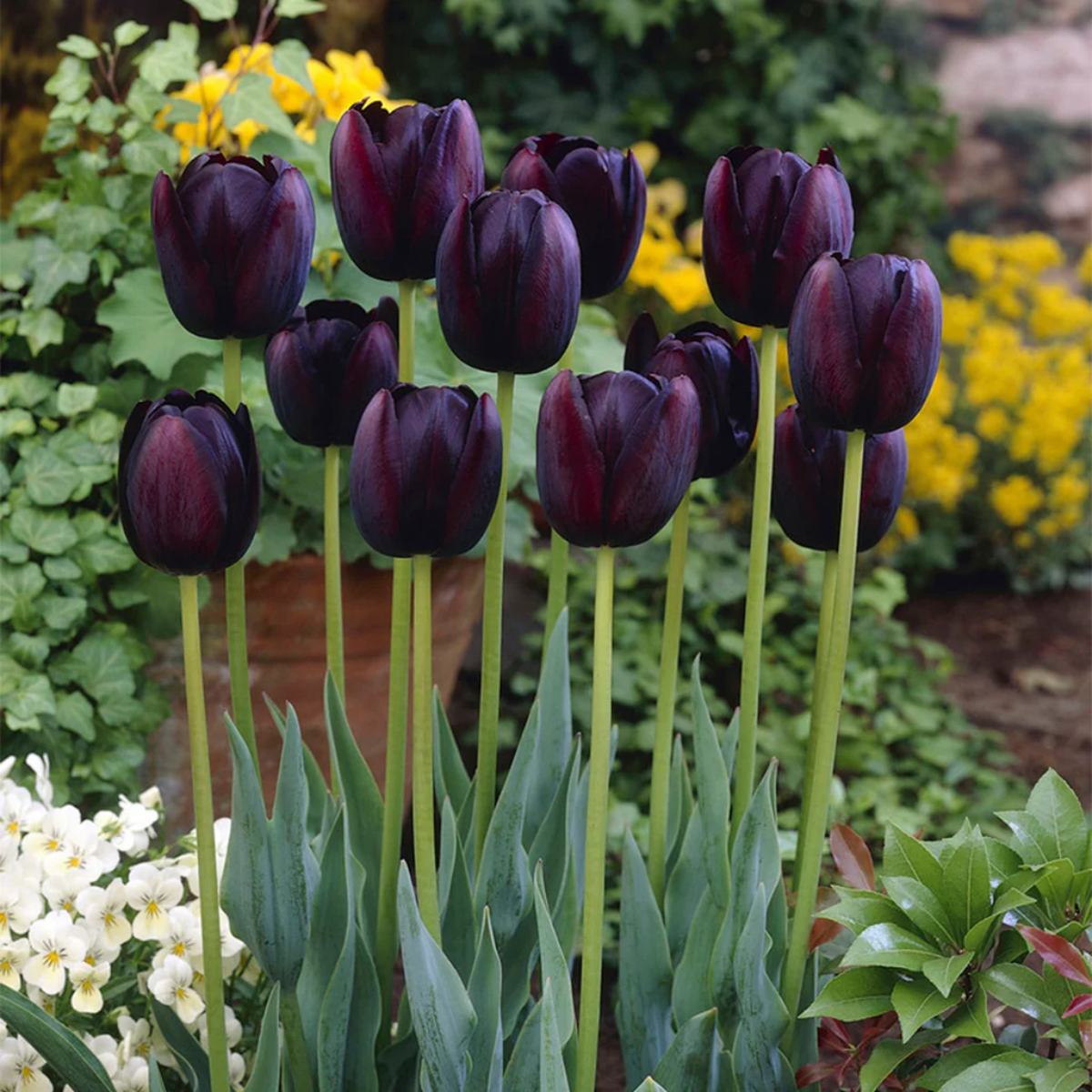
So, Why Do They Look Black Anyway?
Before we start designing, it helps to know what’s going on inside that leaf. In nature, true black pigment is incredibly rare. Plants don’t have melanin like we do. Instead, their dark look comes from a massive overload of something called anthocyanins—the same stuff that makes blueberries blue and fall maples red.
When a plant is genetically wired to produce a ton of these pigments, the leaves absorb nearly all visible light. Our eyes see this lack of reflected light and register it as black. Pretty cool, right?
This little bit of science is actually super practical. It tells you that sunlight is a key ingredient for color. Many dark-leaved plants need a good dose of sun to really rev up that pigment production. In deep shade, that ‘Black Lace’ elderberry you bought might look more like a murky, sad green. But here’s the catch: the same dark surface that soaks up light also heats up… a lot. I learned this the hard way one scorching summer after I completely fried the leaves of a gorgeous, and frankly expensive, elephant ear. The trick is finding that sweet spot of enough light for deep color, but not so much that you cook your plant.
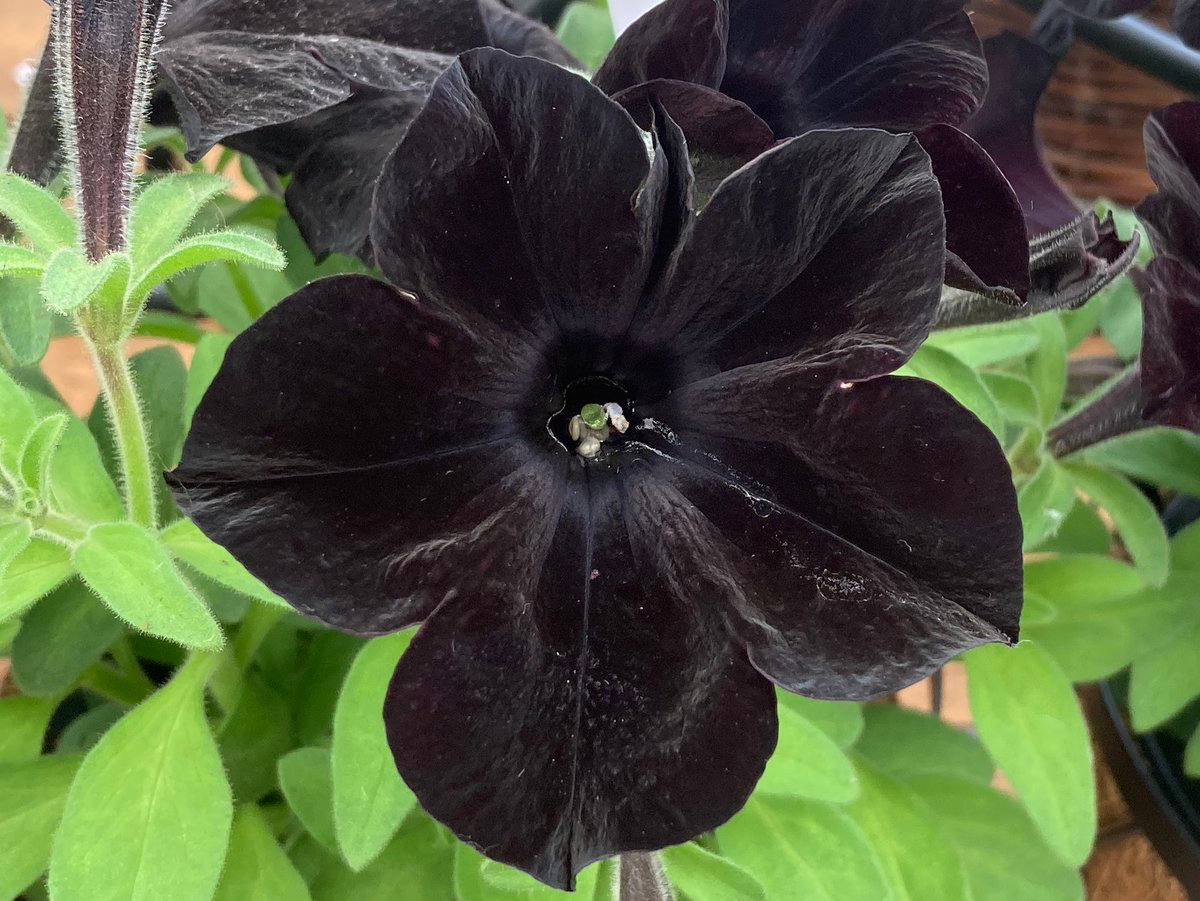
Getting Started: Your First Dark Plant
Feeling a little overwhelmed? Don’t be. If you’re new to this, you don’t have to go all-in on the trickiest specimens. Start simple!
My recommendation for a total beginner is the ‘Black Cat’ Petunia. Why? It’s an annual, so it’s a low-commitment, one-season experiment. You can find them at pretty much any garden center for about $5 to $7 for a 4-inch pot, and they are fantastic in containers. If you mess up, no big deal. You’re out a few bucks and you learned something.
Another great choice is ‘Black Scallop’ Ajuga. It’s a tough-as-nails groundcover that’s super forgiving. It gives you that dark, glossy look, but it’s not fussy at all. Just be sure to plant it where it has room to spread, because it will!
A Gardener’s Go-To List of Dark Beauties
Alright, let’s get into the details. Here are some of the most reliable and stunning dark plants I use all the time in my designs. I’ll give you the real scoop on how to use them, what they need, and what to watch out for.
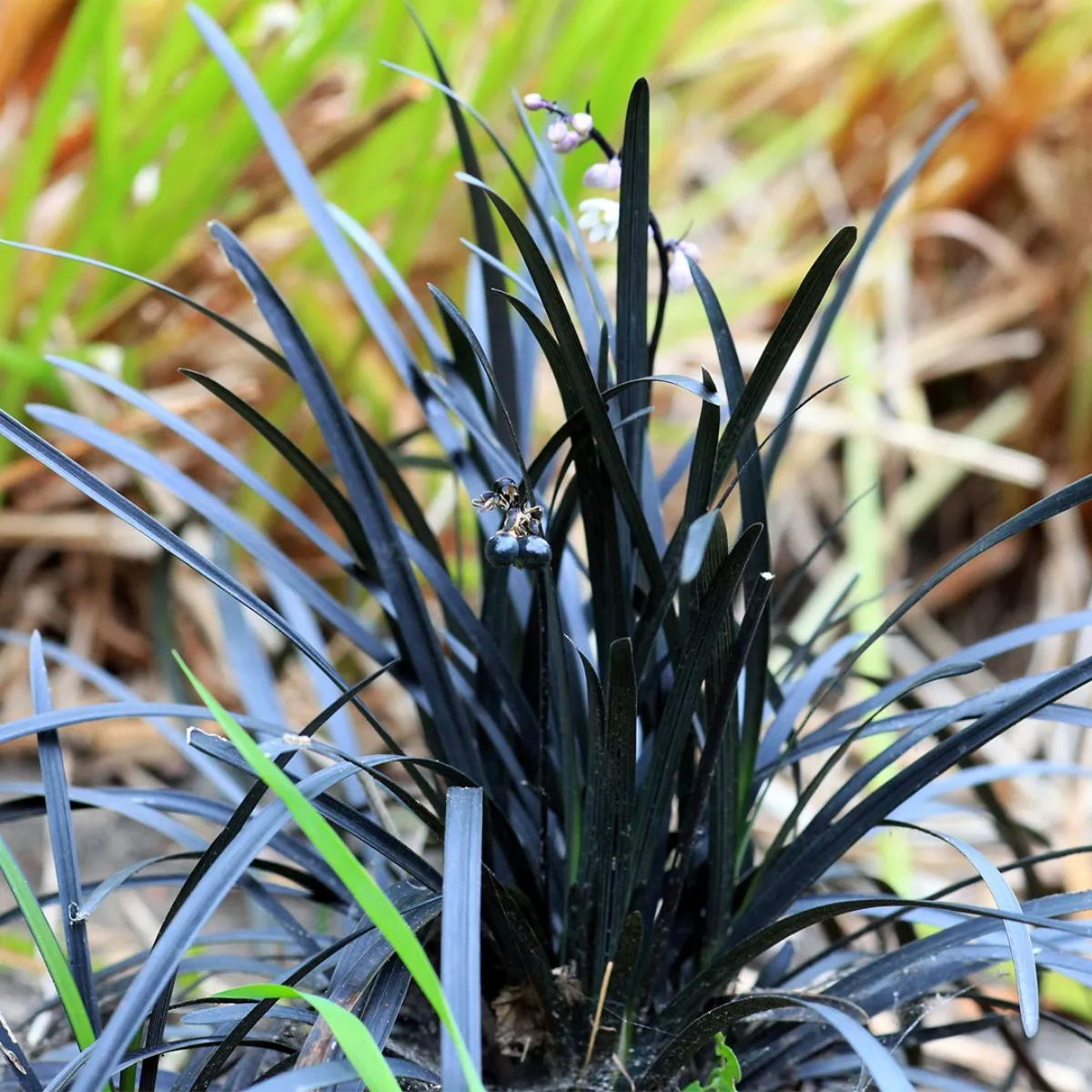
Black Mondo Grass (Ophiopogon planiscapus ‘Nigrescens’)
This is my secret weapon for modern, clean-looking gardens. It’s not actually a grass, but it has that fine, linear texture that’s perfect for edging a stone path or creating a sleek, solid block of color. It’s a very slow spreader, which I see as a huge plus—it stays right where you put it for years.
Care & Cost: It does best in hardiness zones 6-9 and needs a few hours of morning sun to get that true, deep black. In full shade, it can look more dark green. Heads up, it hates soggy soil, especially in winter. I once had to replace an entire border because a low spot collected water and rotted the roots. Now, I always mix in some compost or pine bark fines to lighten up heavy clay soil before planting. A small plug might cost you $10-$15, so you’ll want to get it right. Plant them about 6 inches apart and be patient; it’ll take a couple of seasons to fill in.
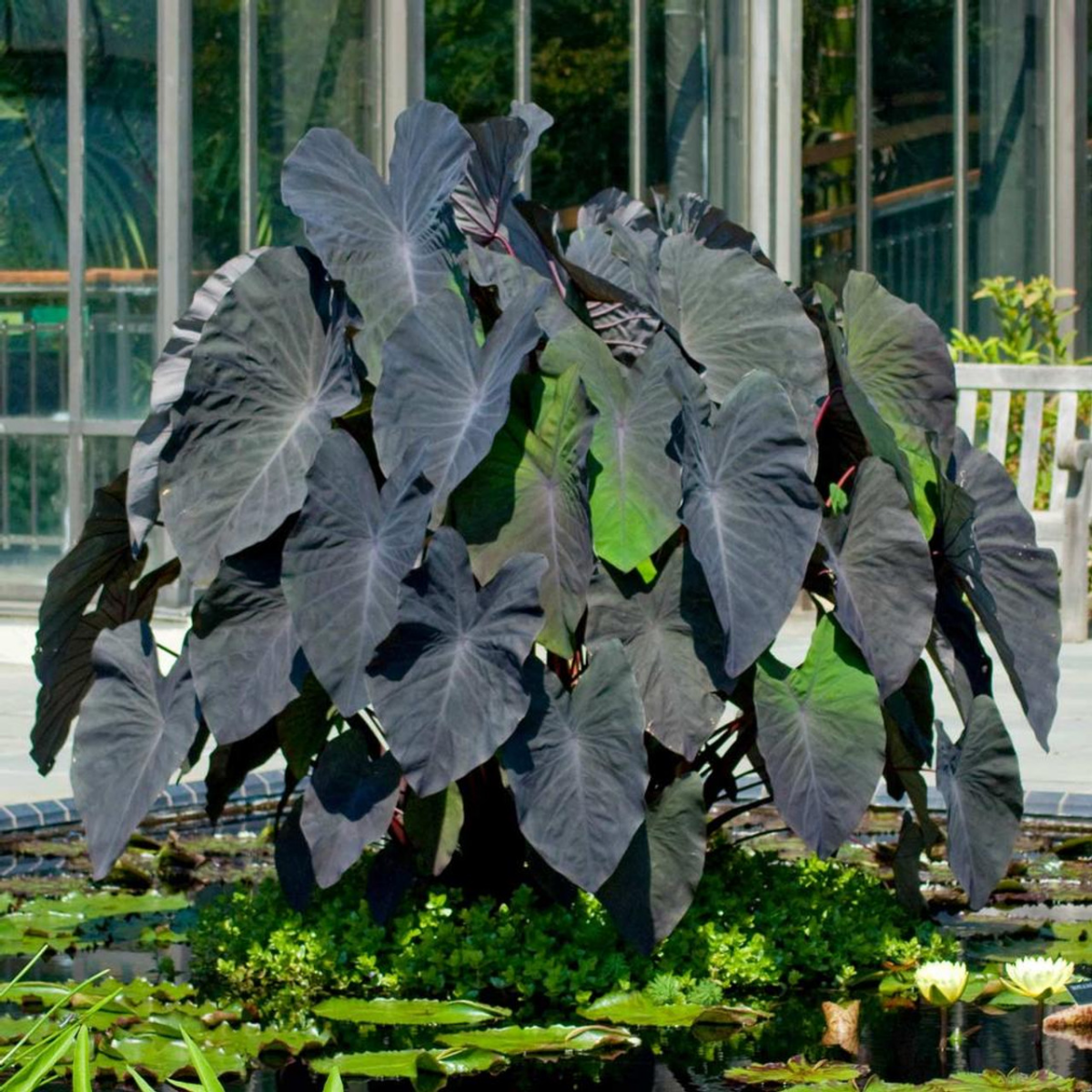
Pro Tip: Pair it with something chartreuse, like Golden Japanese Forest Grass or a ‘Lime Rickey’ Heuchera. The electric lime-green makes the black look even blacker. It’s a classic combo for a reason.
Black Magic Elephant Ear (Colocasia esculenta ‘Black Magic’)
If you want pure, unadulterated tropical drama, this is your plant. The leaves are enormous, velvety, and can easily get two feet long. I use this as a “thriller” in big pots or as a focal point near a pond. It’s a hungry, thirsty beast, but the visual payoff is totally worth it.
Care & Cost: This is a tropical plant (hardy in zones 8-10), so for most of us, it’s an annual. You can find tubers online or at nurseries in the spring for around $15 to $25. It loves heat, sun, and tons of water. Seriously, you can’t really overwater it. The more sun you give it, the darker the leaves get, but you have to keep that soil consistently moist.
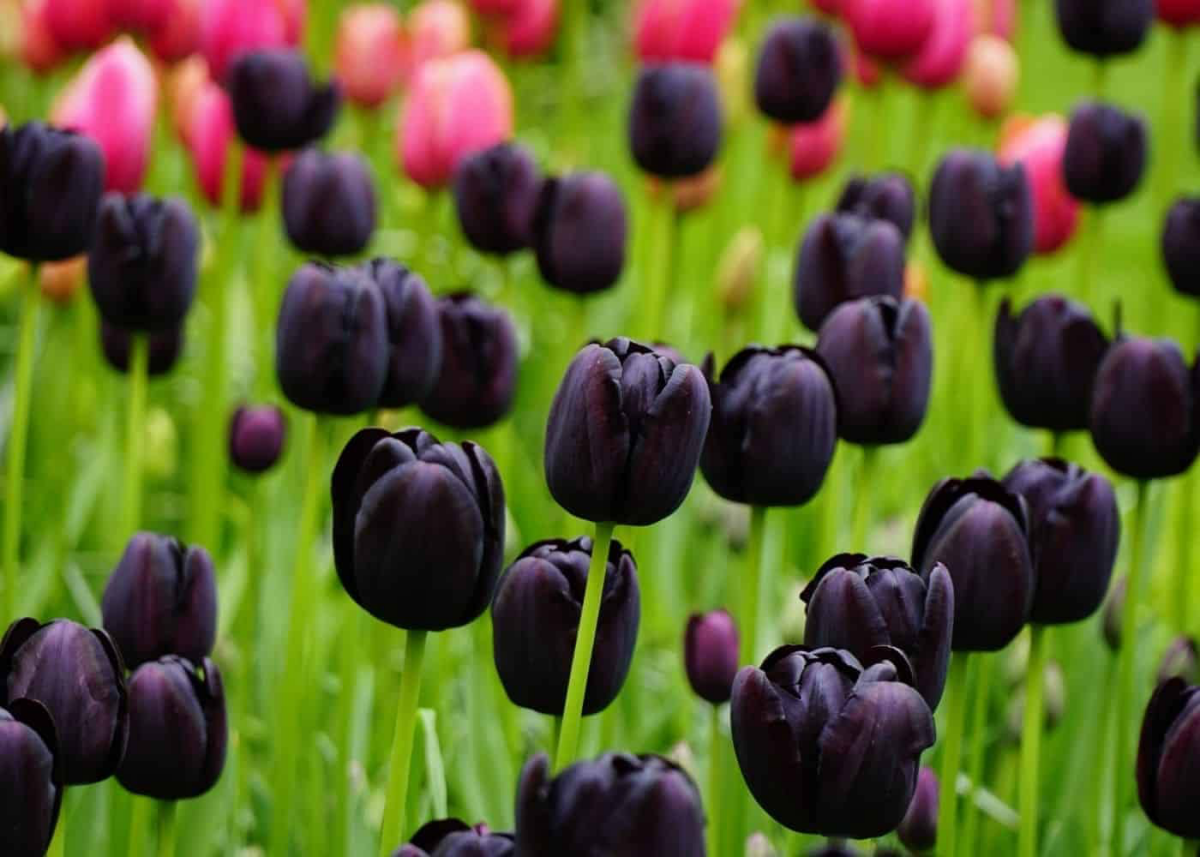
Quick Tip: To save the tuber for next year, wait for the first light frost to knock back the leaves. Cut the stems to 6 inches, dig up the tuber, brush off the dirt, and let it dry in a shady spot for a week. Then, store it in a cardboard box with some peat moss in a cool, dark basement. Easy peasy.
Heads Up! All parts of this plant are toxic if eaten raw due to calcium oxalate crystals, which can be nasty for pets and little kids. I always wear gloves when handling it, as it can irritate sensitive skin.
Black Lace Elderberry (Sambucus nigra ‘Black Lace’)
Oh, I love this shrub. It’s a total workhorse. You get lacy, almost-black foliage all season, delicate pink flowers in early summer, and then dark berries in the fall that the birds go crazy for. Plus, it’s deer resistant, which is a lifesaver in many areas.
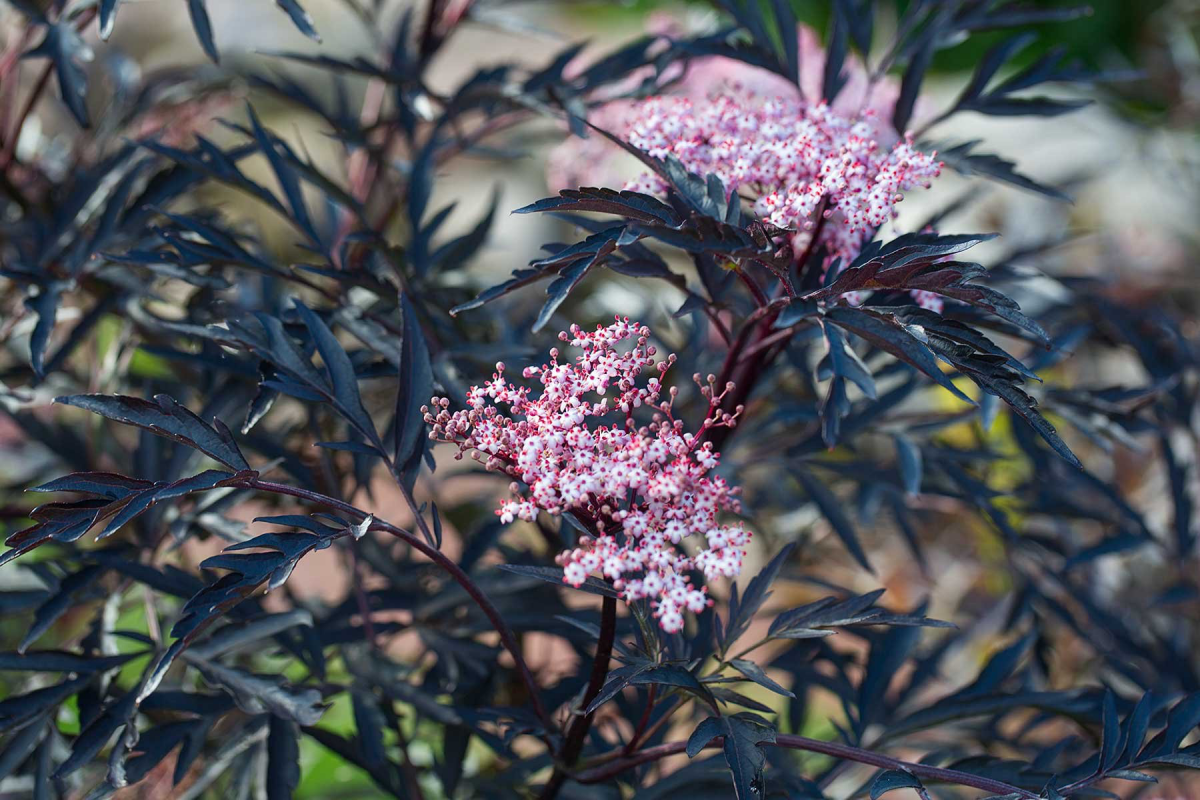
Care & Cost: It’s hardy in zones 4-7 and grows fast. Give it full sun for the best color. You can find a 1-gallon plant for around $25, but a bigger 3-gallon pot might run you $50-$60. It’s a good investment piece. It can get a bit wild, so I recommend a hard prune in late winter. This is a technique called coppicing (basically, cutting it way back to about a foot off the ground). It sounds scary, but it encourages tons of fresh new growth with the absolute best color.
Safety Note: You see those berries and hear about elderberry syrup, right? Well, the berries are only edible when fully ripe and cooked. Uncooked berries, leaves, and stems are toxic and can cause some serious stomach upset. So, enjoy them on the bush or cook them up properly!
‘Obsidian’ Heuchera (Coral Bells)
Heucheras have exploded in recent years, but ‘Obsidian’ is still one of the best dark varieties out there. The leaves are smooth, shiny, and stay a deep purple-black all season. It forms a neat little mound, making it perfect for the front of a border or for adding a splash of dark to your container designs. In many climates, it’s evergreen, so you get winter color, too.
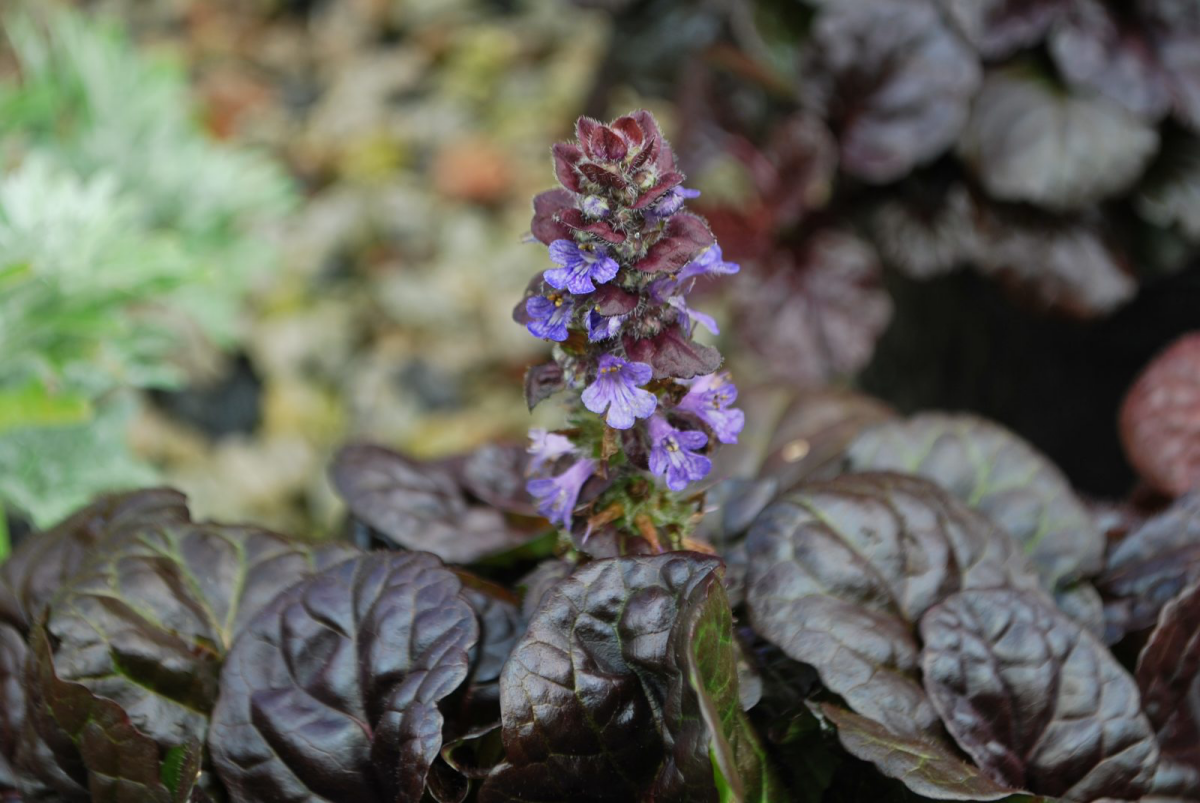
Care & Cost: Hardy in zones 4-9, this plant prefers part-shade, especially protection from that blistering afternoon sun. The absolute most important thing is well-drained soil. They will rot in a heartbeat in wet winter clay. A 1-quart pot is usually pretty affordable, maybe $12-$18. After a few years, the plant can get a bit woody. Just dig it up in the spring, break it into a few smaller pieces, and replant them. Boom, free plants!
Black Velvet Petunia (like Petunia ‘Black Cat’)
When these first hit the market, they were a game-changer. They aren’t a true, pitch-black, but more of a deep, velvety purple that reads as black. I use these exclusively in pots and hanging baskets. They are absolutely electric when you pair them with silver or acid-yellow.
Care & Cost: As I mentioned, these are cheap and cheerful annuals, usually $5-7 a pop. They need at least 6 hours of sun to pump out the flowers, and they are heavy feeders. Mix a slow-release fertilizer into your potting soil, and then hit them with a liquid feed every couple of weeks. Don’t forget to deadhead them (that just means pinching off the old, spent blooms) to keep the flowers coming all summer long.
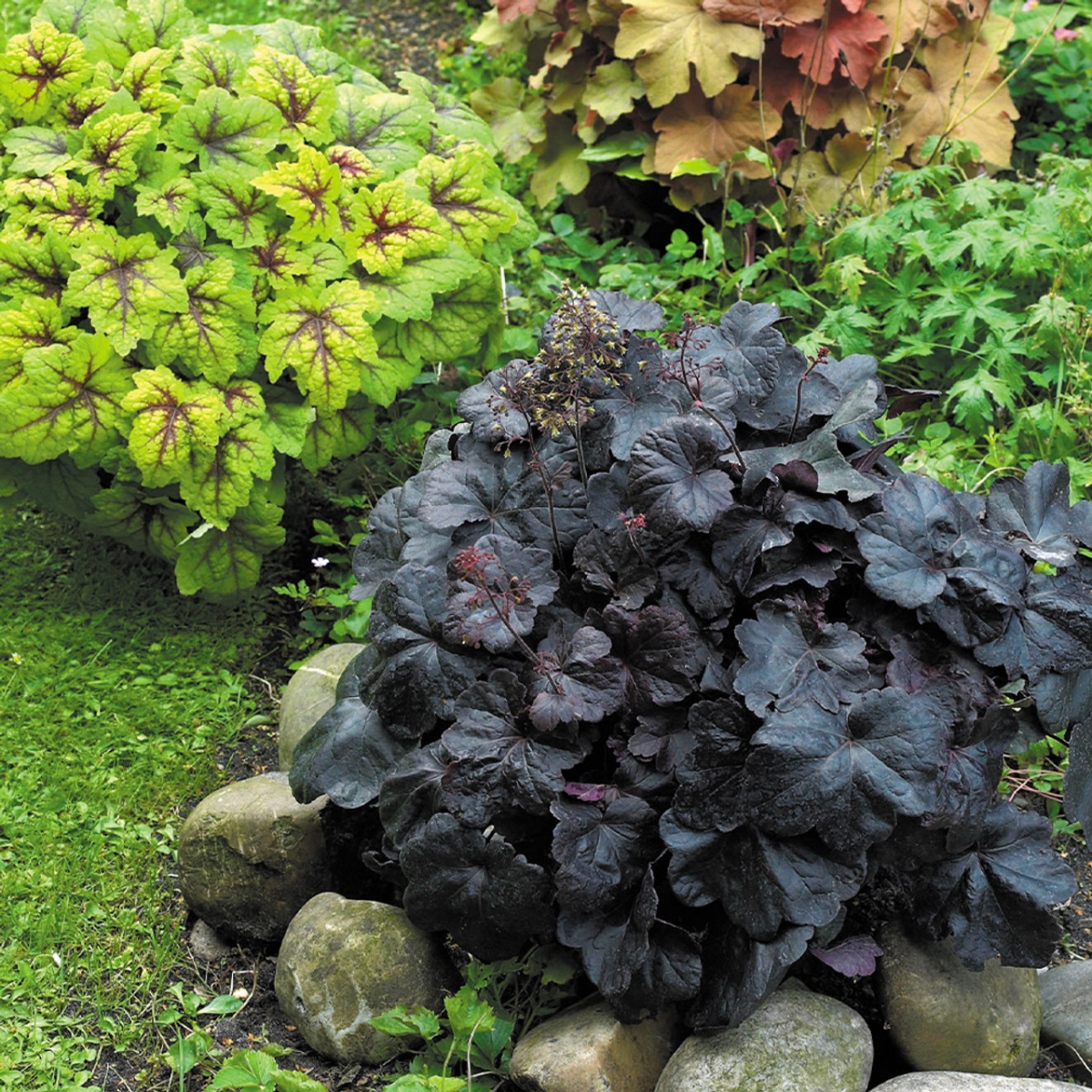
A Quick Recap: Which Dark Plant is Right for You?
Okay, that was a lot of info. If you’re trying to decide, here’s a quick rundown to help you choose:
- Need something for a sunny container? Go for the Black Petunia or the Black Magic Elephant Ear.
- Looking for a shady groundcover? Ajuga is your best, toughest bet. Heuchera and Black Mondo Grass also work beautifully in part-shade.
- Want a big, dramatic shrub? The Black Lace Elderberry is a fantastic choice that gives you interest all year long.
- Just want to dip your toe in? Start with an inexpensive Petunia. It’s a one-season trial run!
- Feeling like an expert? For a real challenge, you could try to track down a Bat Flower (Tacca chantrieri). It’s a fussy tropical houseplant, but the flower is one of the most incredible things you’ll ever see. It’s definitely not for the faint of heart!

Shopping & Sourcing Tips
So where do you find all this cool stuff? It varies. You’ll find petunias, and probably some common Heuchera varieties, at big-box stores like Home Depot or Lowe’s. They’re getting better at stocking interesting plants.
For things like Black Mondo Grass or a specific Elderberry cultivar, you might have better luck at a dedicated local nursery. These are the places run by plant nerds (like me!), and they often have a better selection.
And don’t forget online! For specialty bulbs like the ‘Queen of the Night’ tulip or to find specific plant varieties, online retailers are your best friend. Just be sure to buy from a reputable source with good reviews.
Final Thoughts & A Fun Little Challenge
The key to using dark plants is balance. An entire garden of black would just… disappear. Start with one or two. See how their color plays against a bright green lawn, a silvery Artemisia, or even a light-colored fence. And pay attention to texture! The glossy sheen of an Ajuga next to the matte finish of a stone paver is a subtle detail that makes a garden feel so much more intentional and sophisticated.
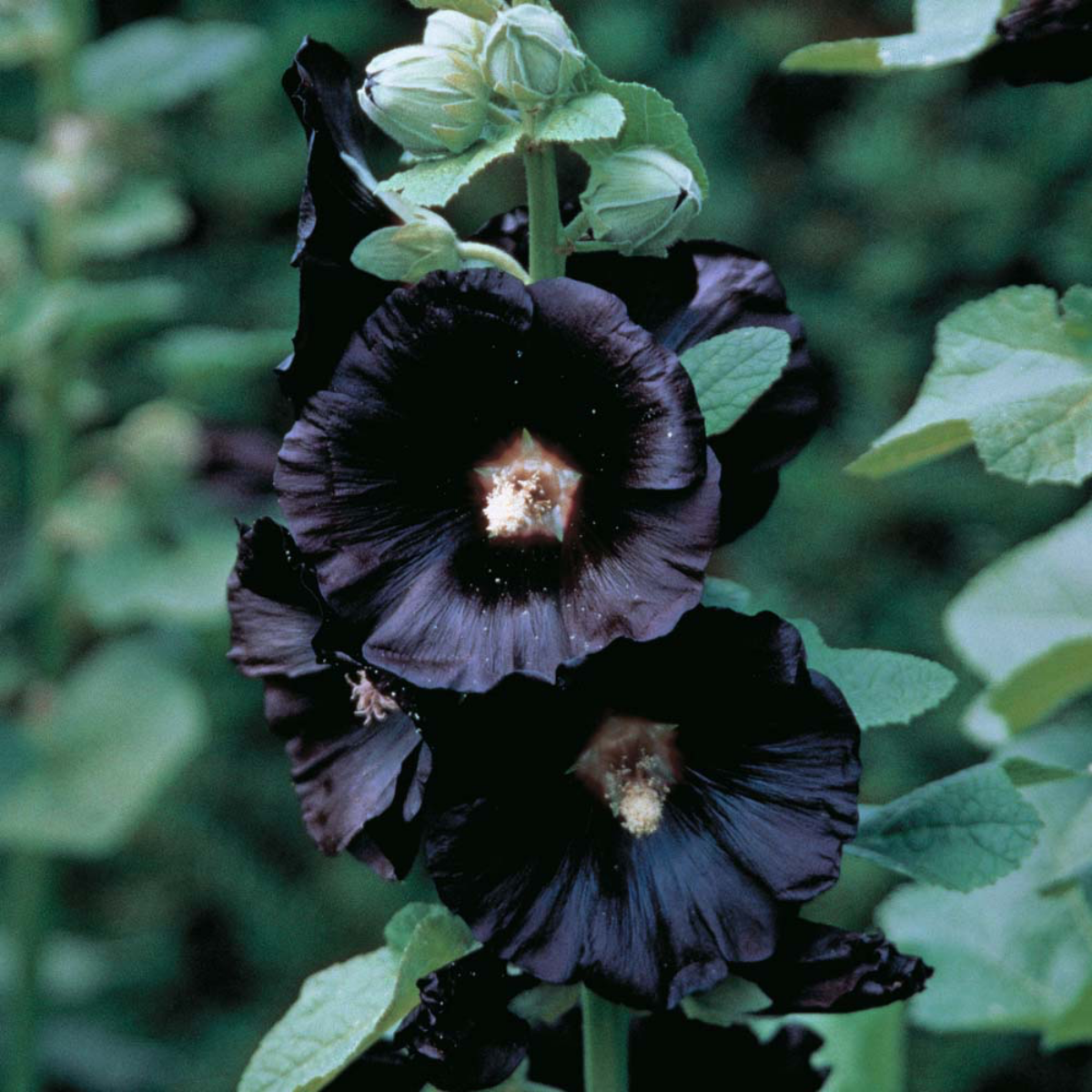
And remember, gardening is a journey. Not everything will work. Every single experienced gardener has a long, long list of plants they’ve accidentally killed. It’s part of the process. Observe what happens, learn from it, and try again.
This Week’s Dark Garden Challenge: Ready to start? Go grab one black petunia, one chartreuse ‘Margarita’ sweet potato vine, and one silver Dusty Miller. Plant all three together in a 12-inch pot. It’s a classic, can’t-fail combination that will look amazing all summer. Go on, give it a try!
Galerie d’inspiration
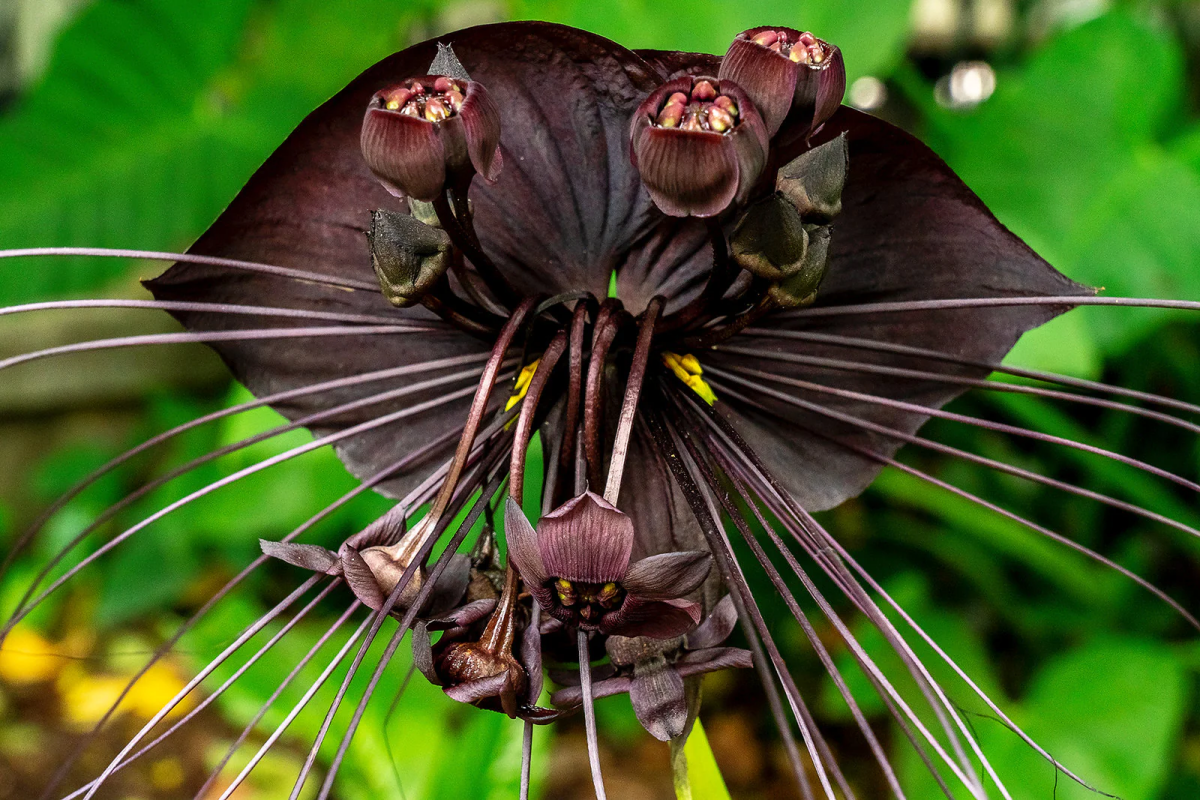

Heuchera ‘Obsidian’: The perfect choice for a bold, contained statement. Its large, glossy leaves form a neat mound, ideal for defining a border or spilling from a terracotta pot. Think of it as a living sculpture that makes silver and lime-green neighbors pop.
Black Mondo Grass (Ophiopogon ‘Nigrescens’): For a more subtle, textural effect. This slow-spreading grass-like plant weaves a dark carpet through garden beds or between paving stones, providing a modern, sleek groundcover that smothers weeds.
Your choice depends on your goal: a single, dramatic focal point or a pervasive, moody atmosphere.
During the Dutch ‘Tulip Mania’ of the 1630s, the most sought-after and mythicized bulbs were the so-called










